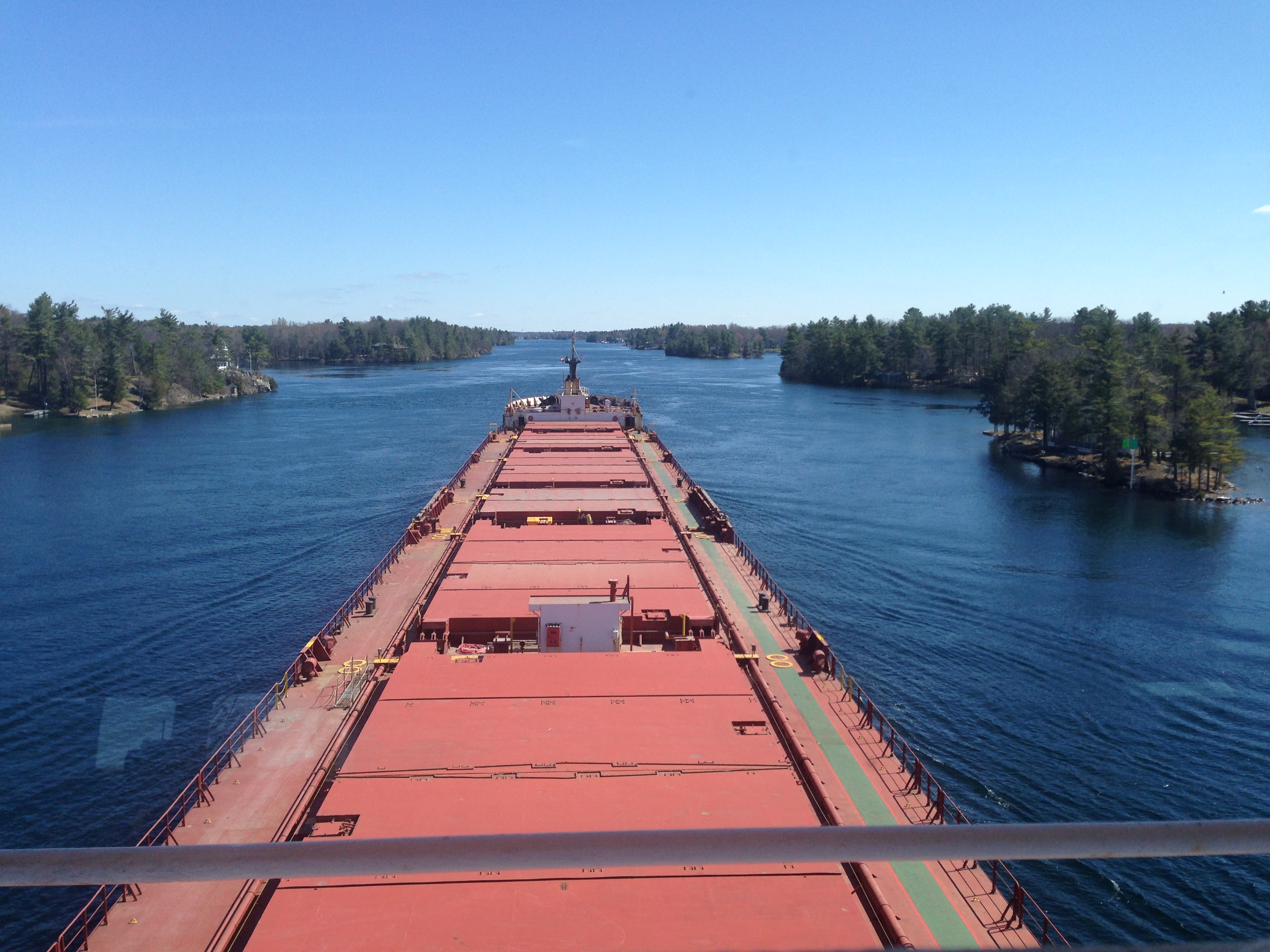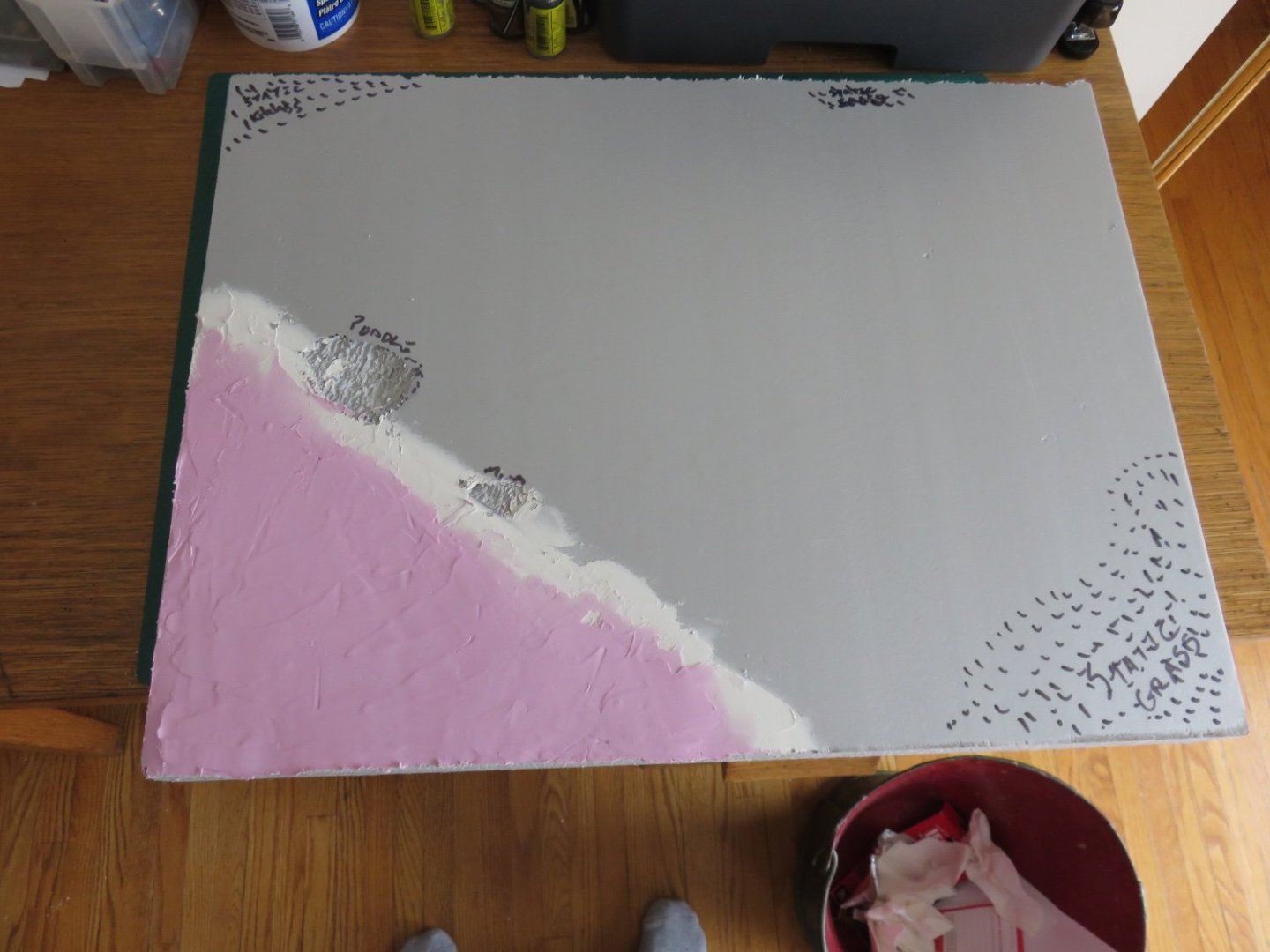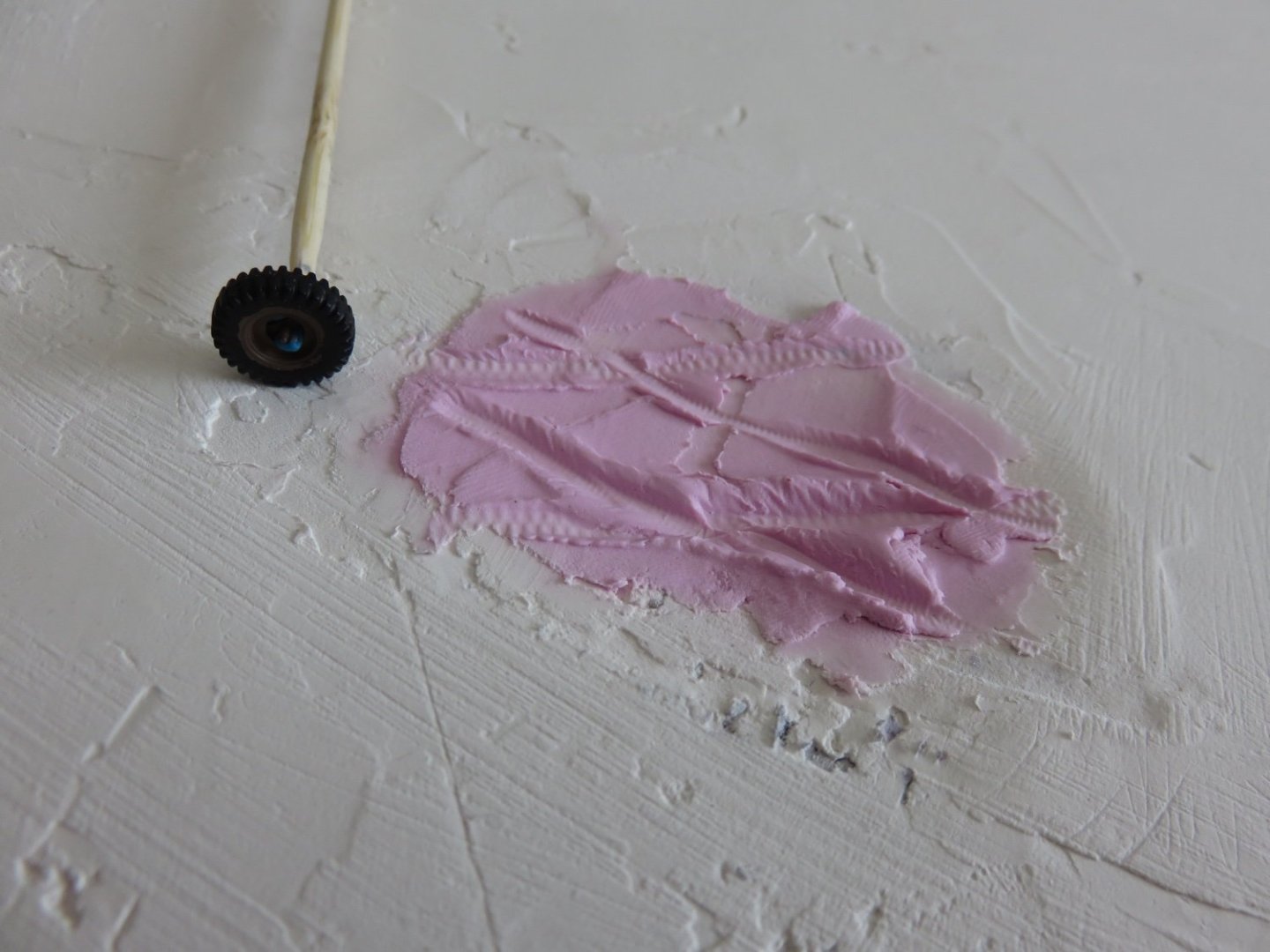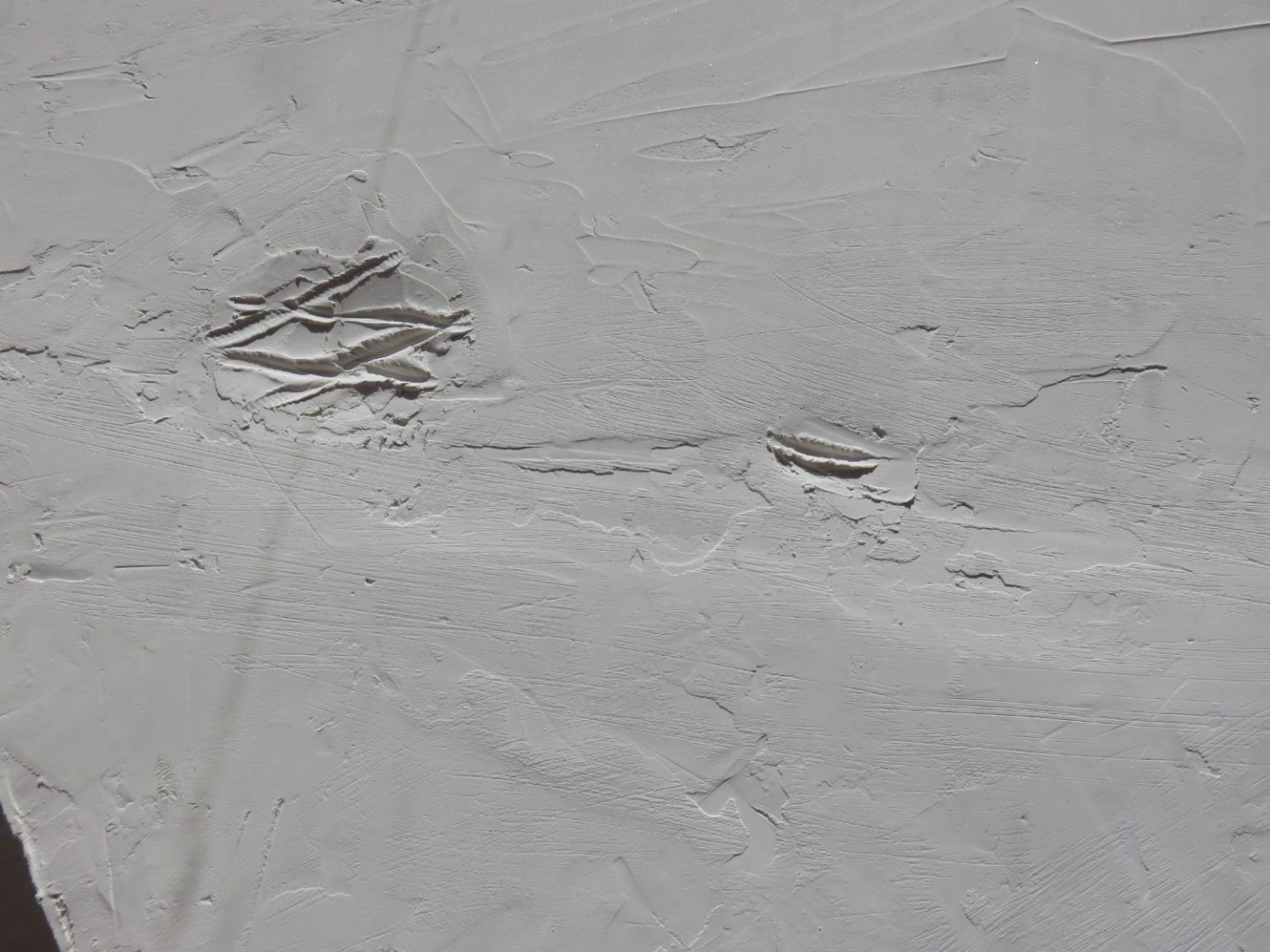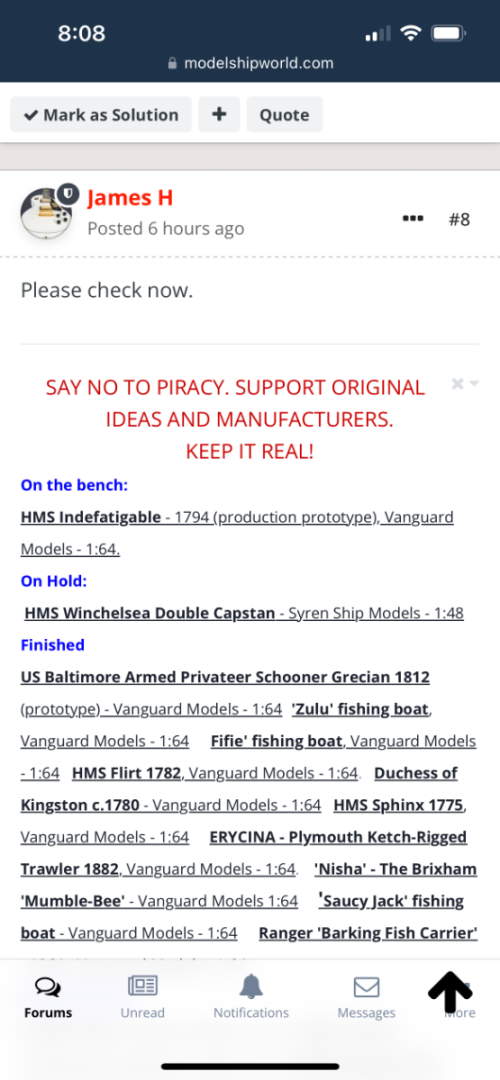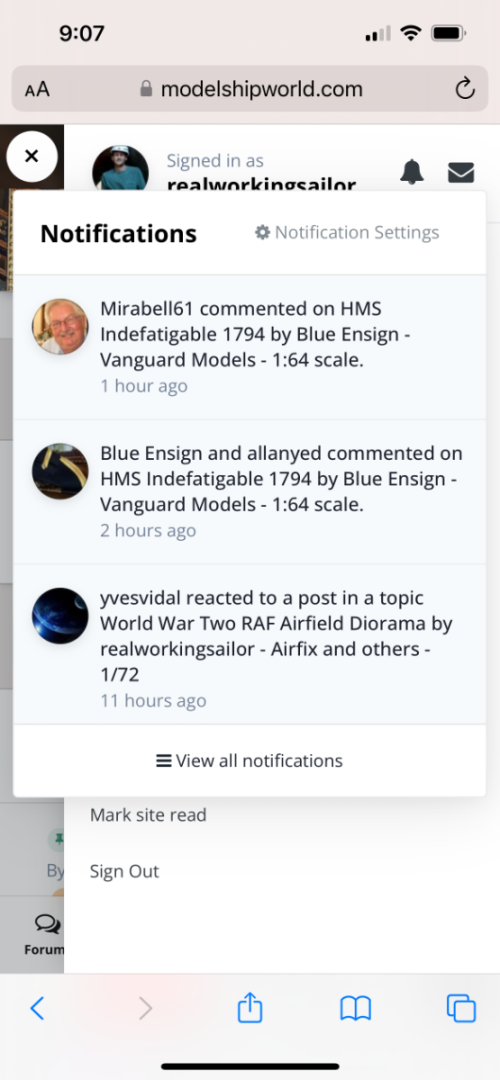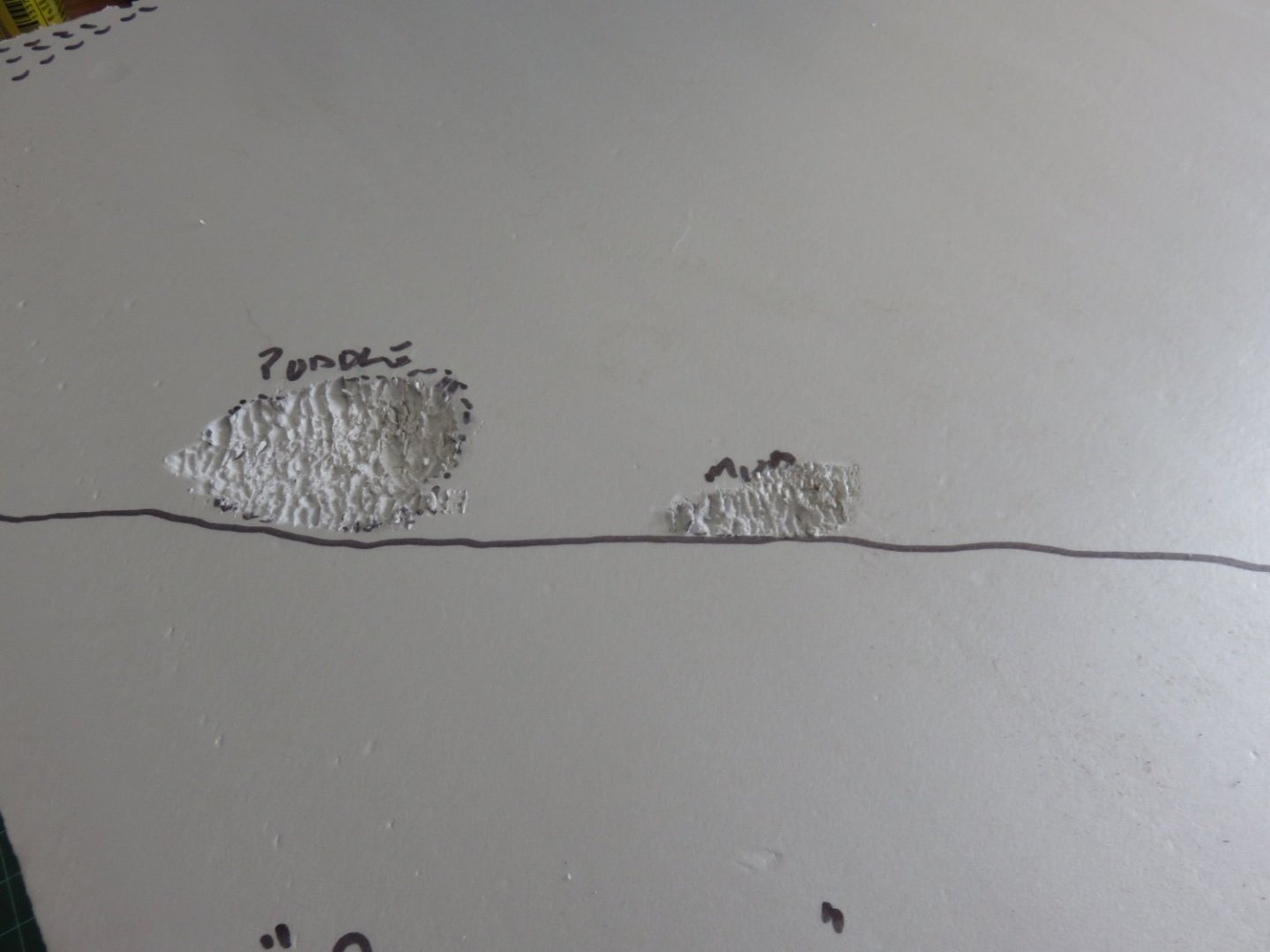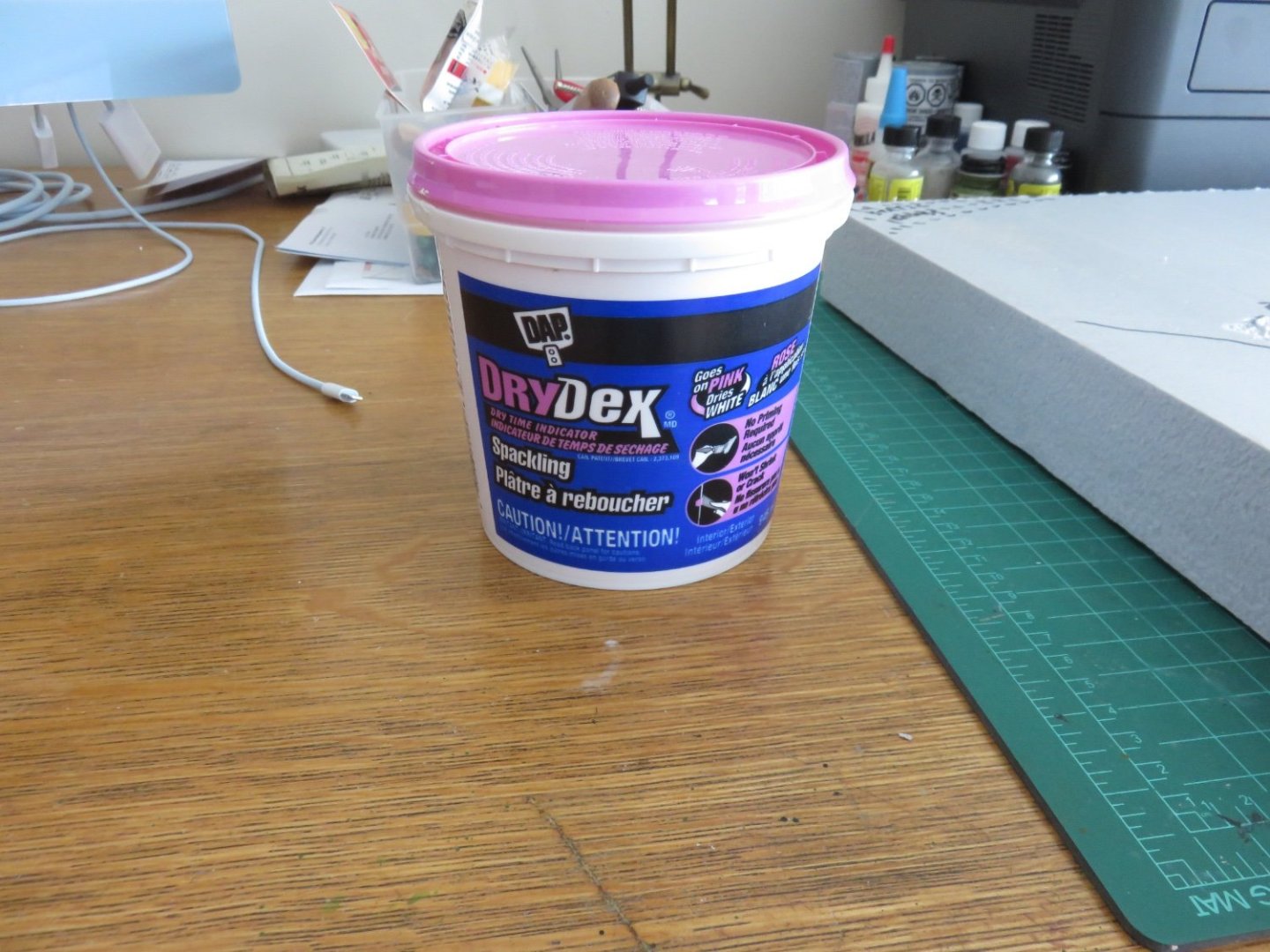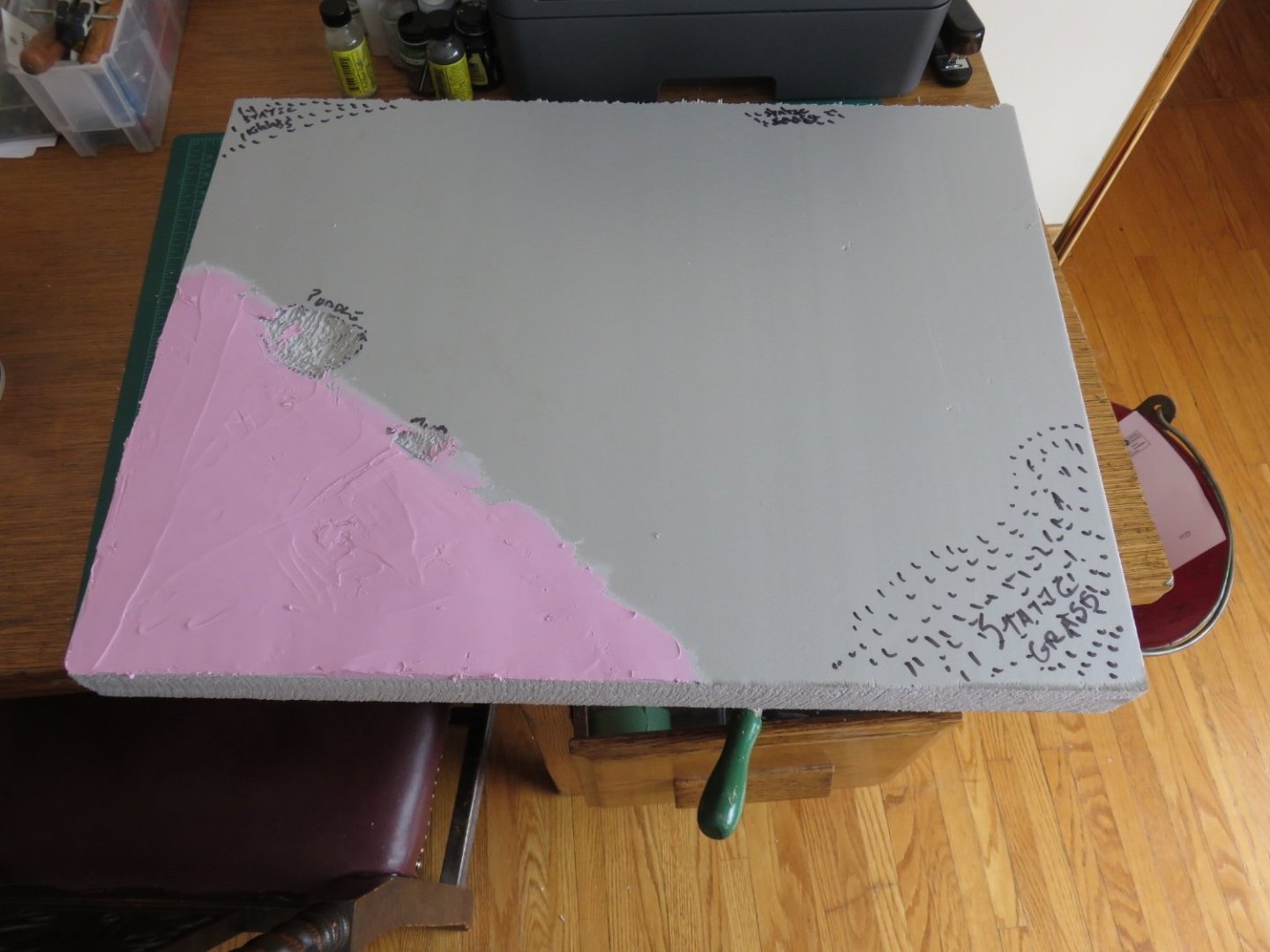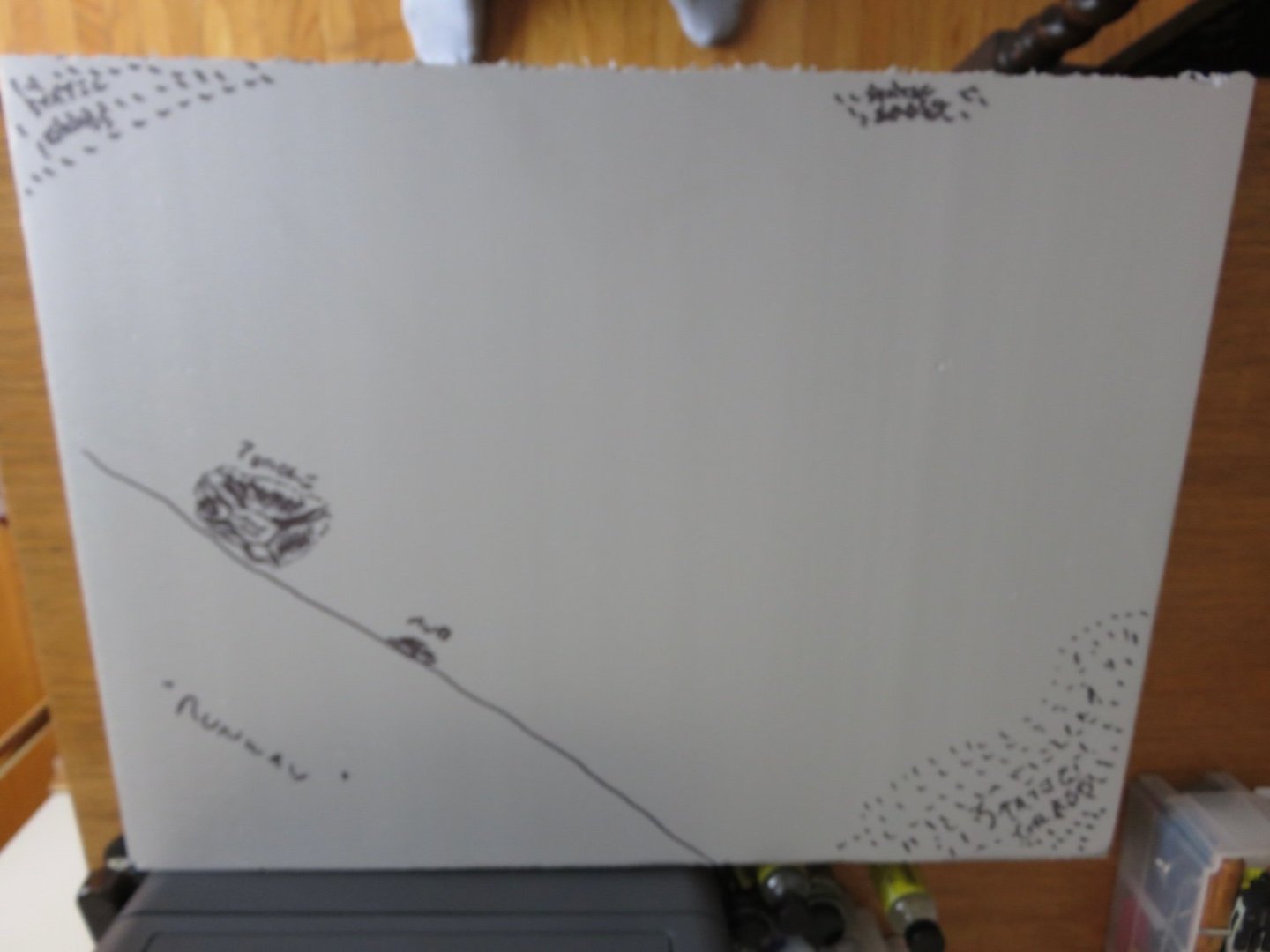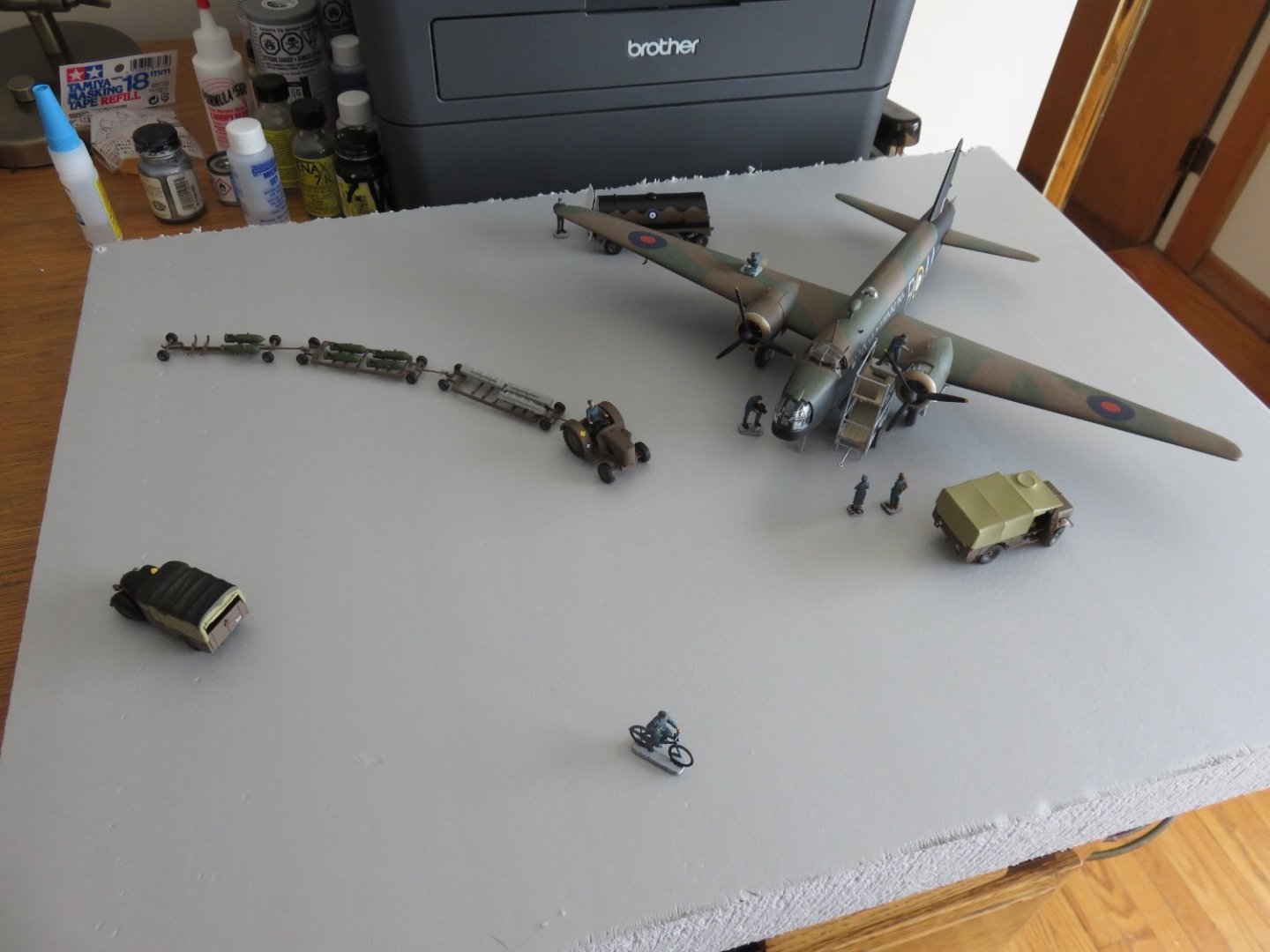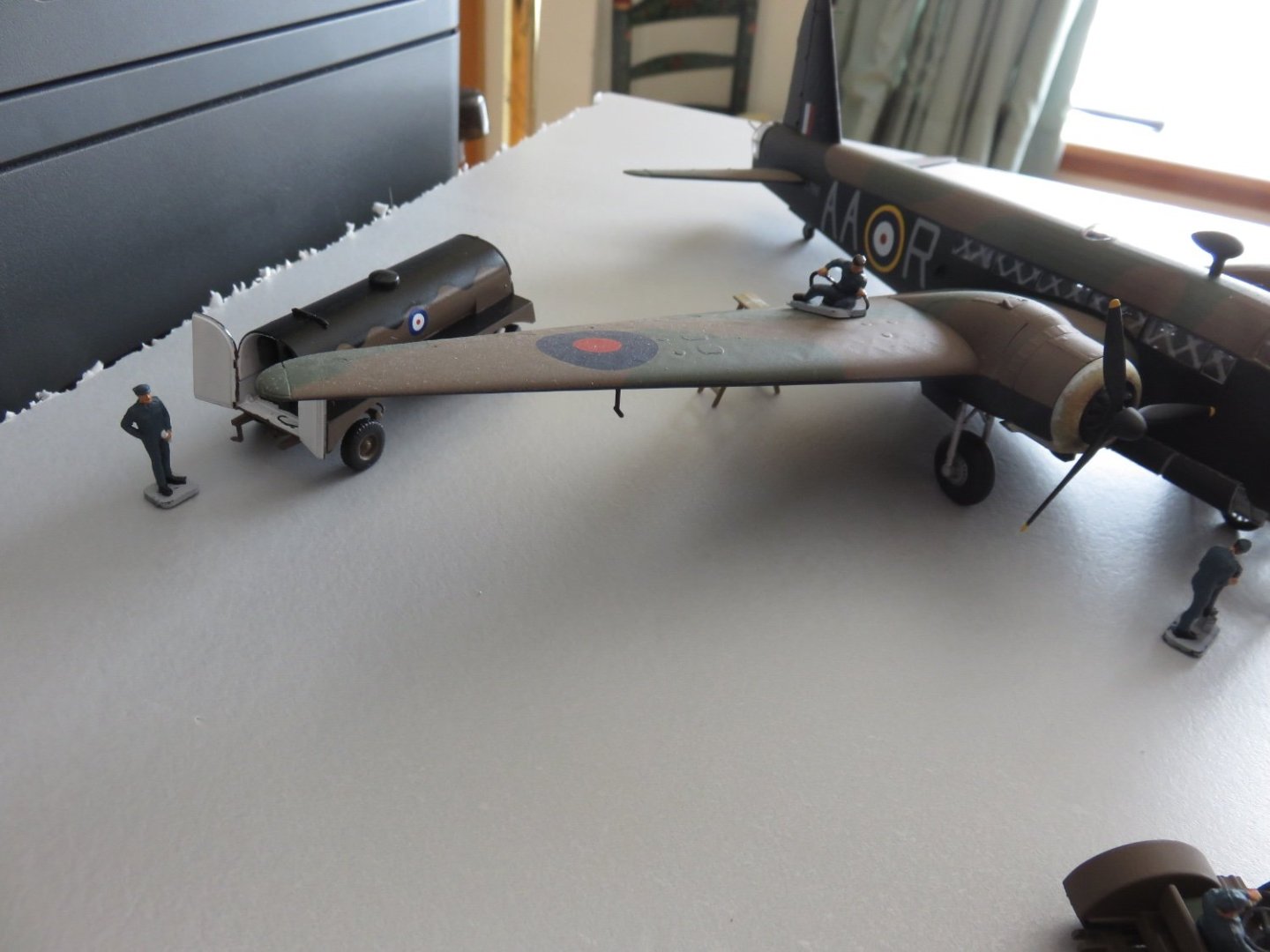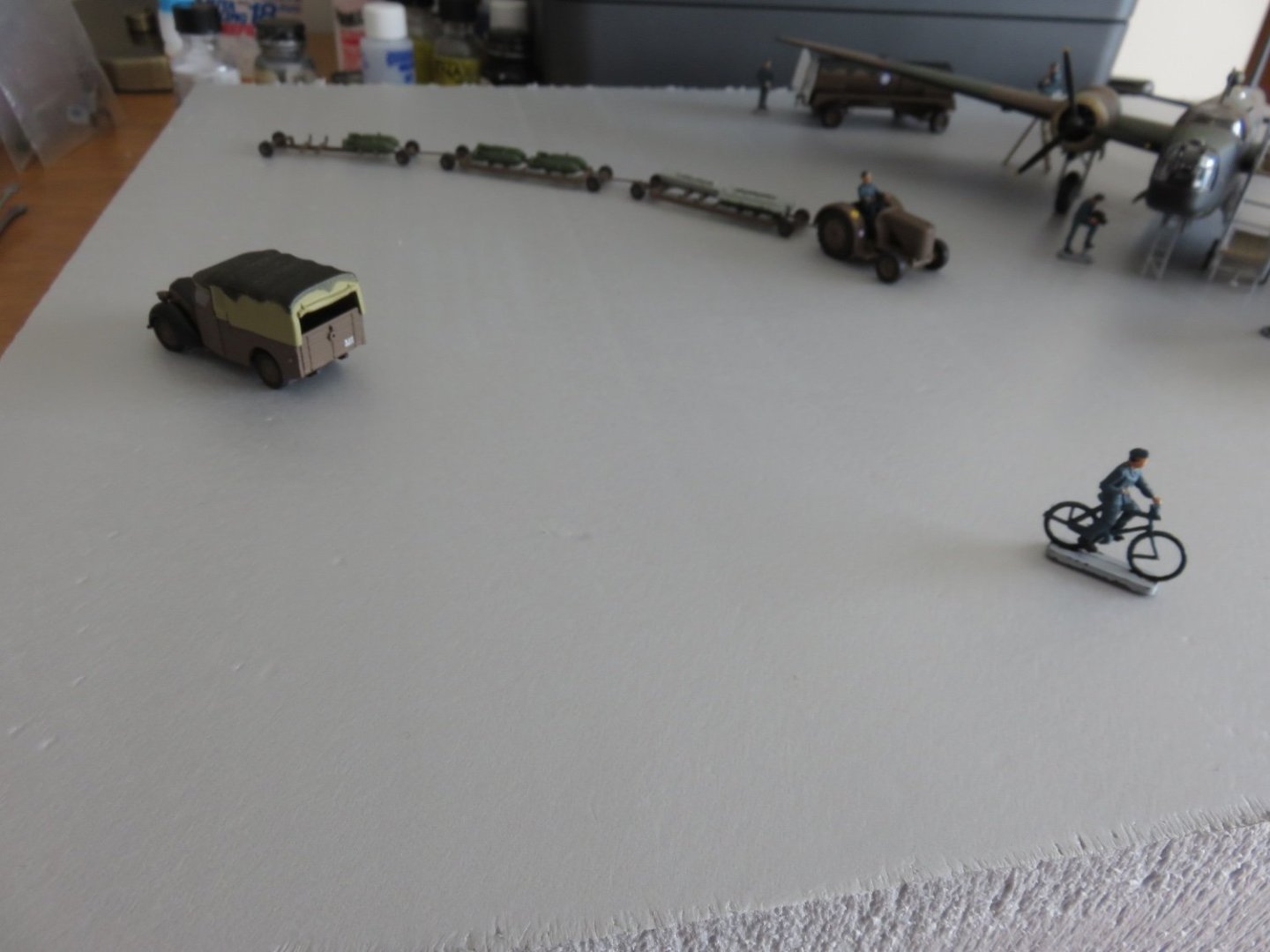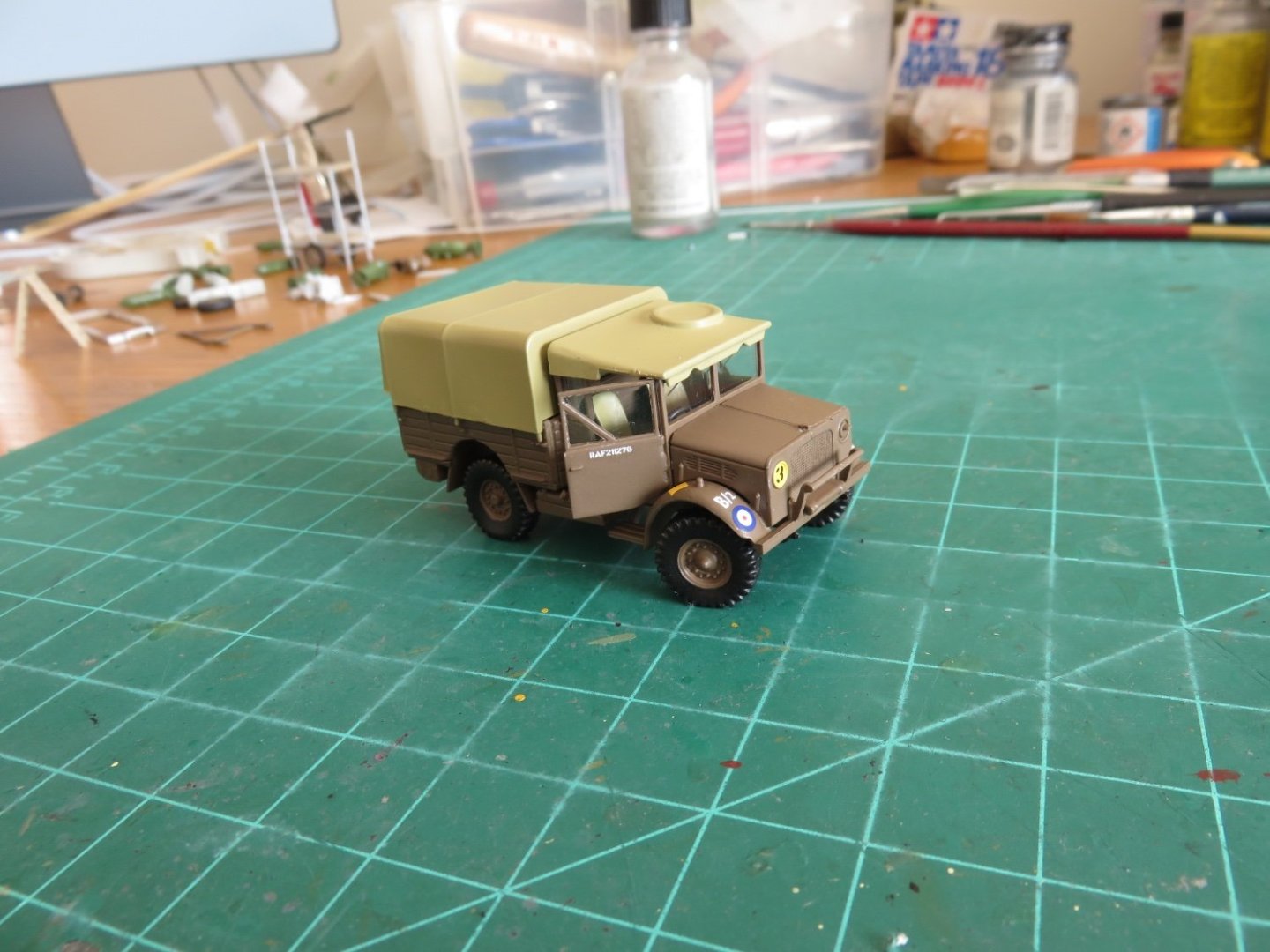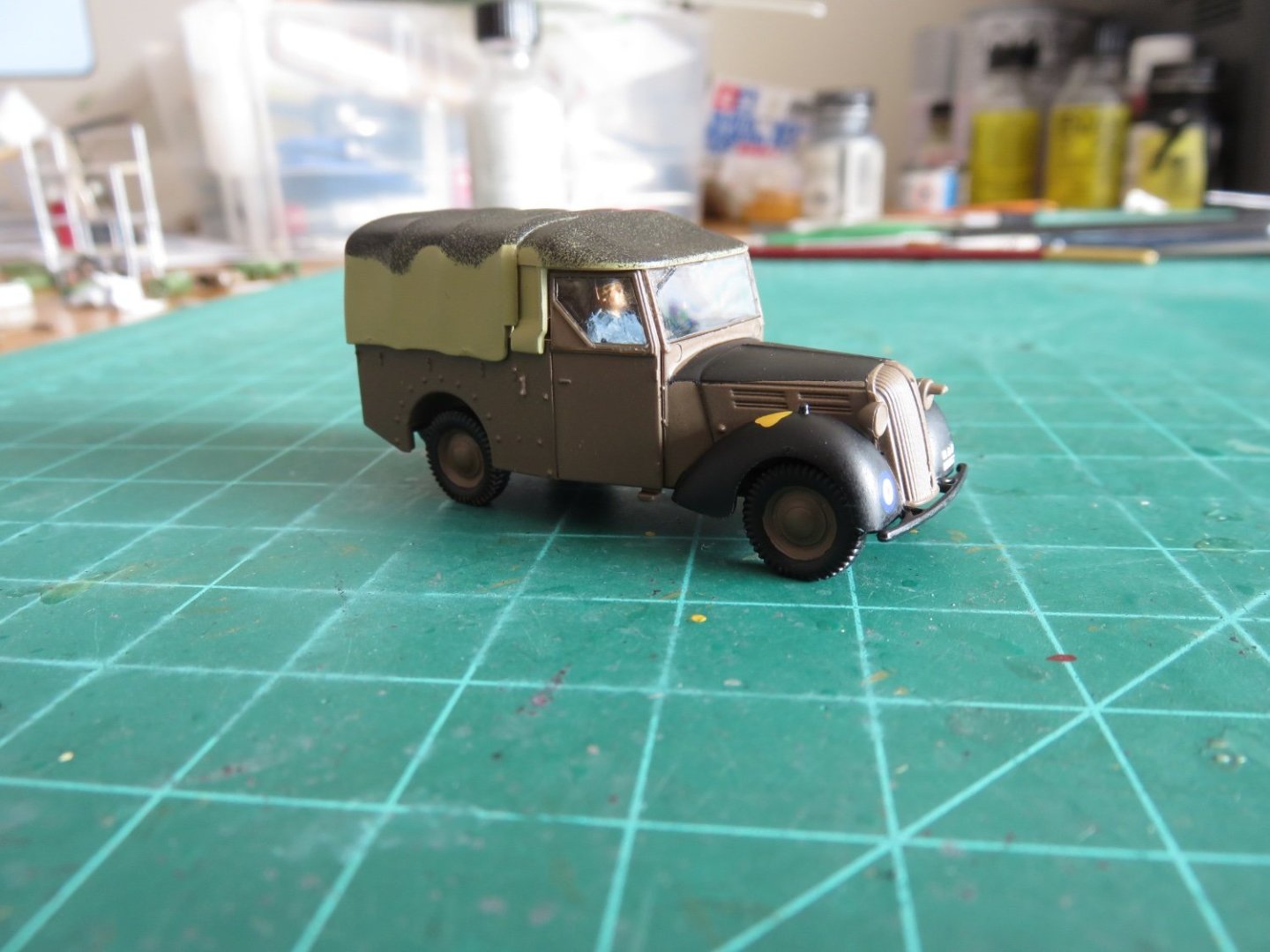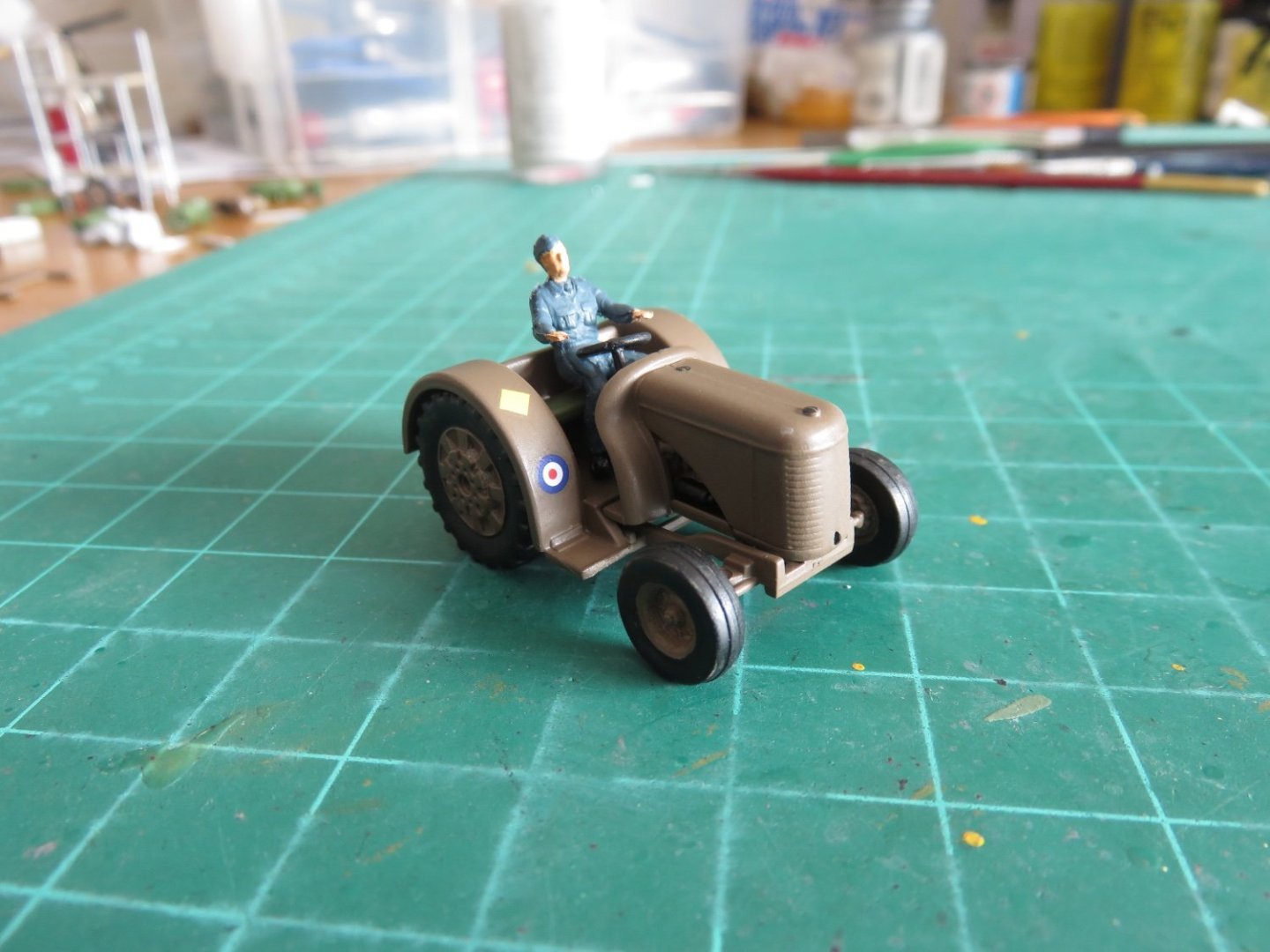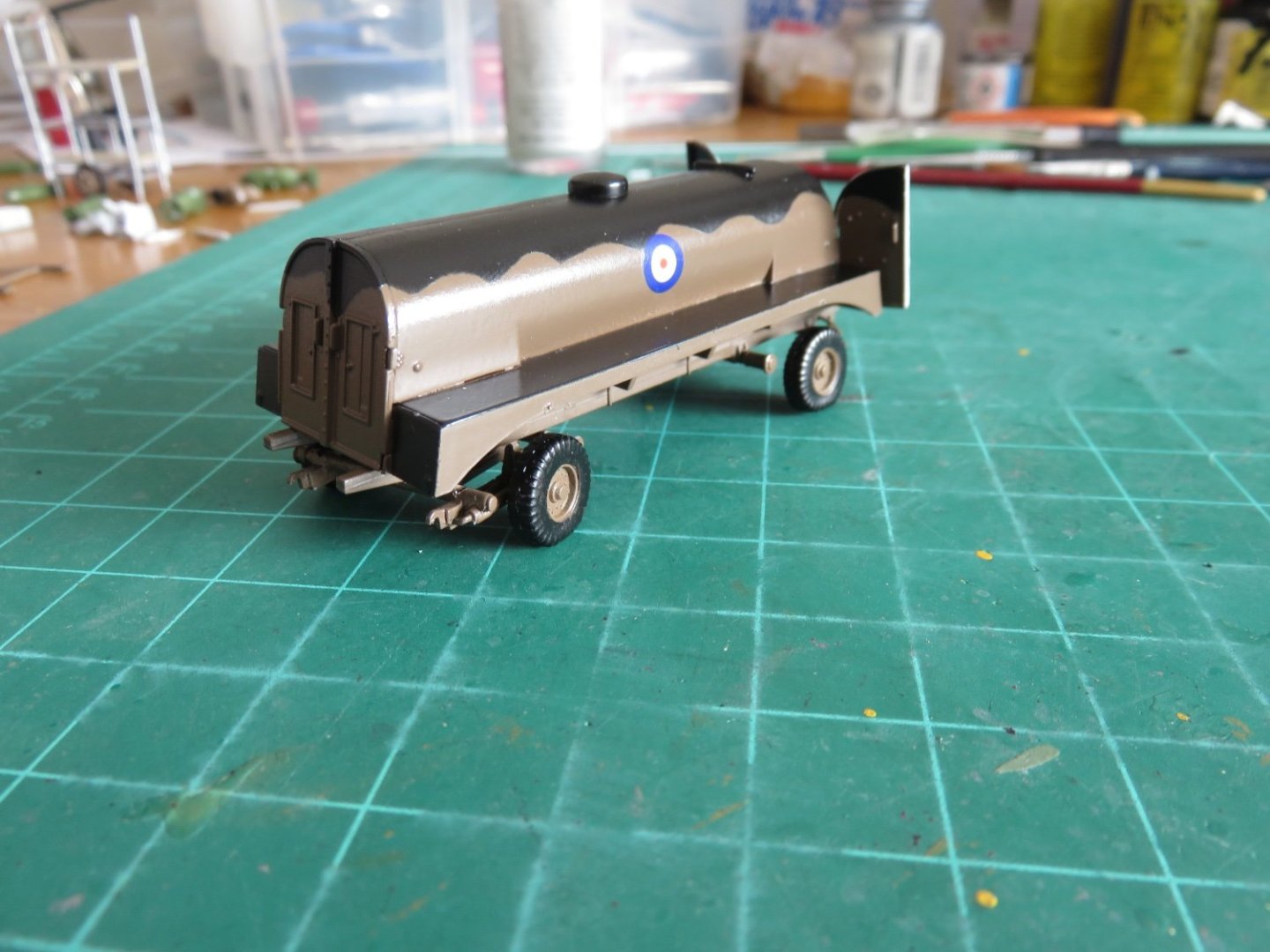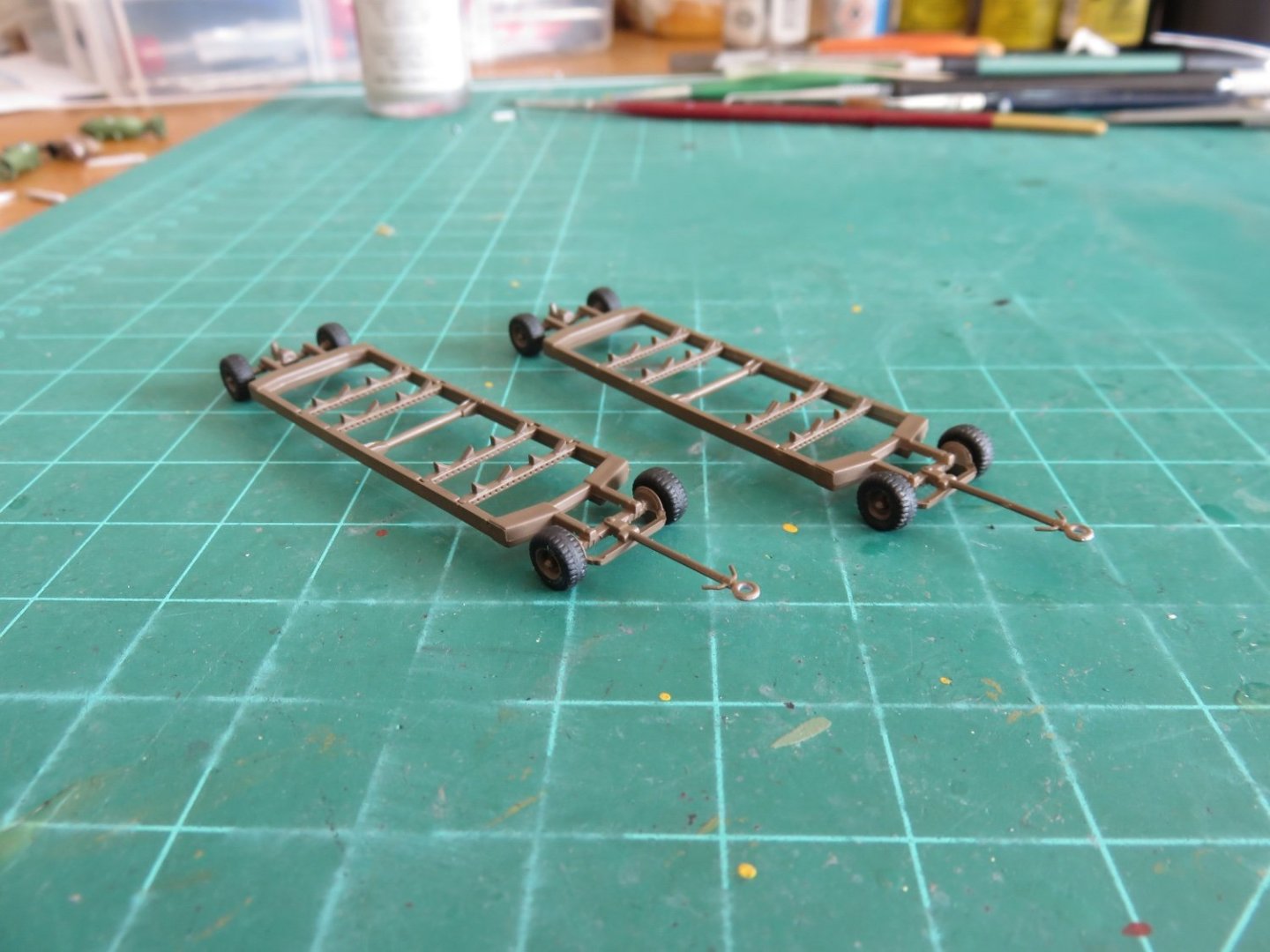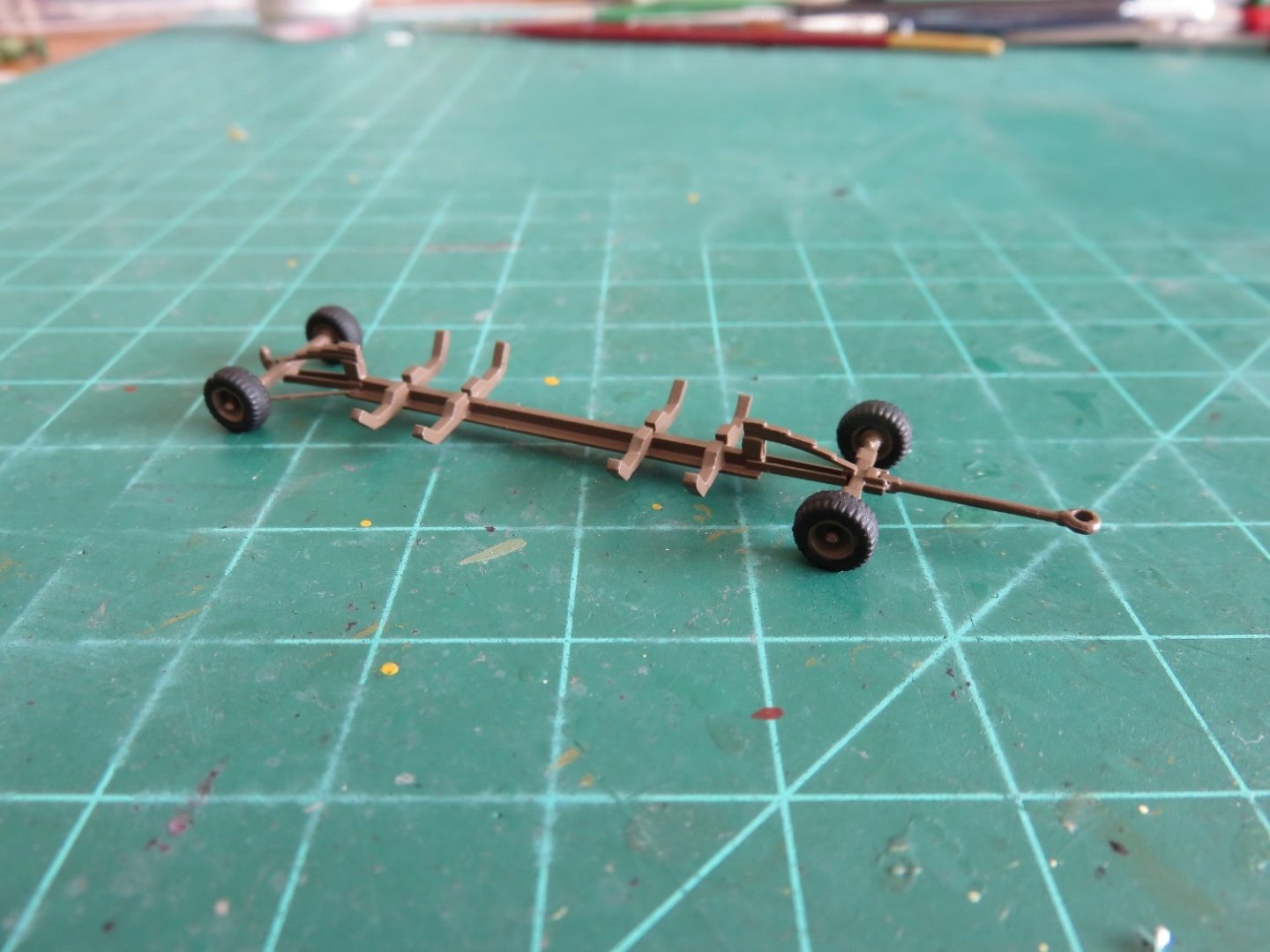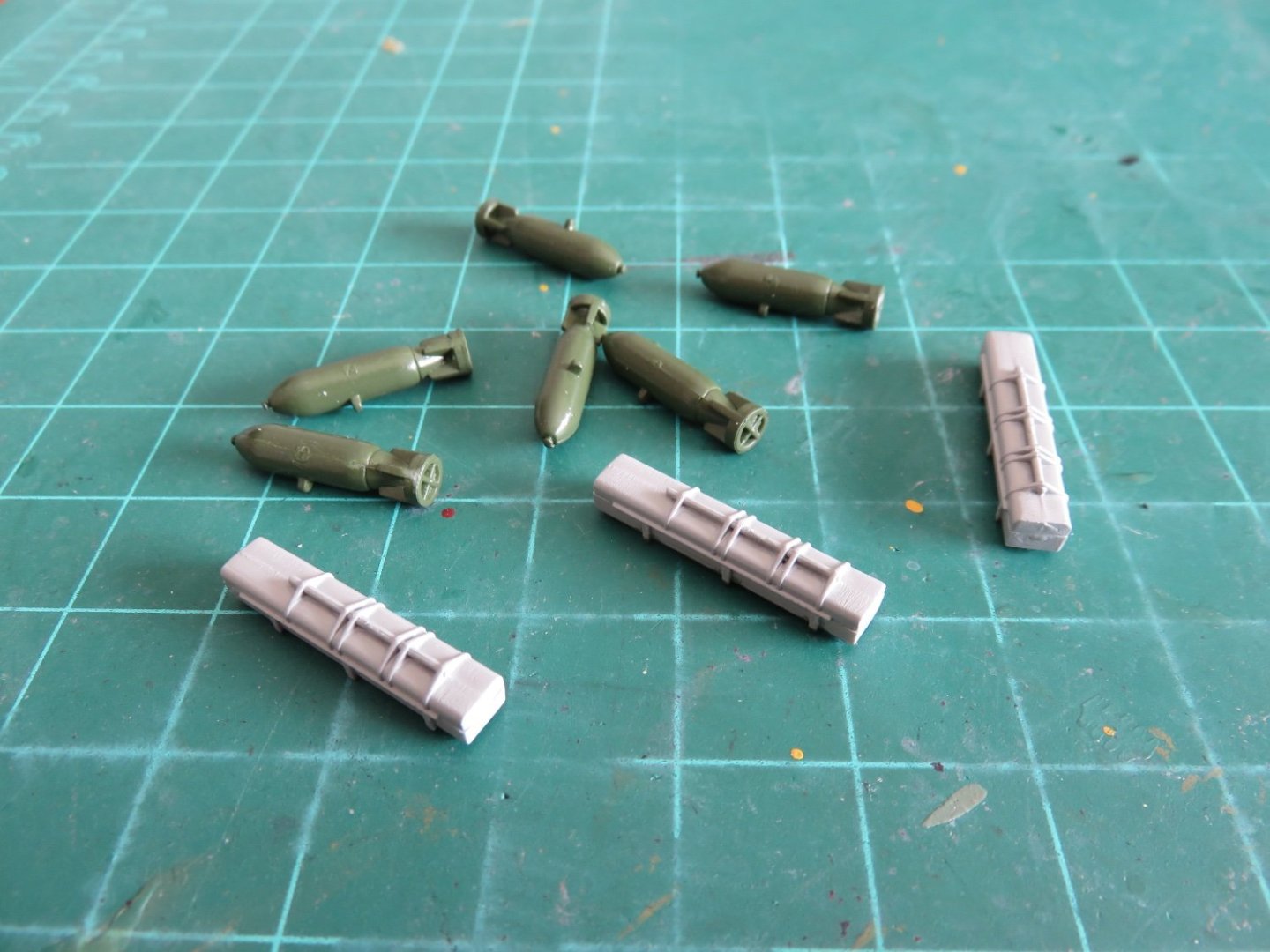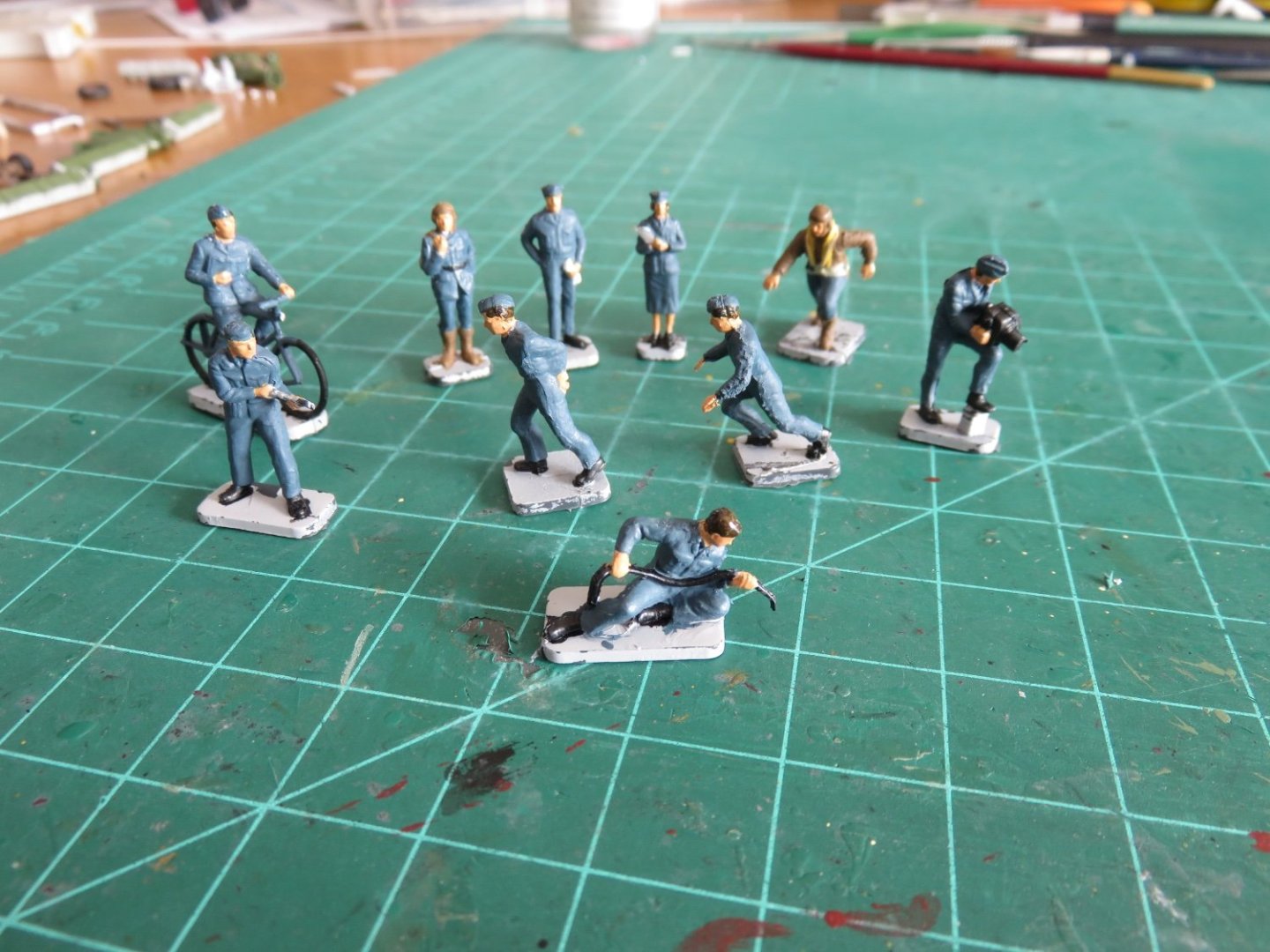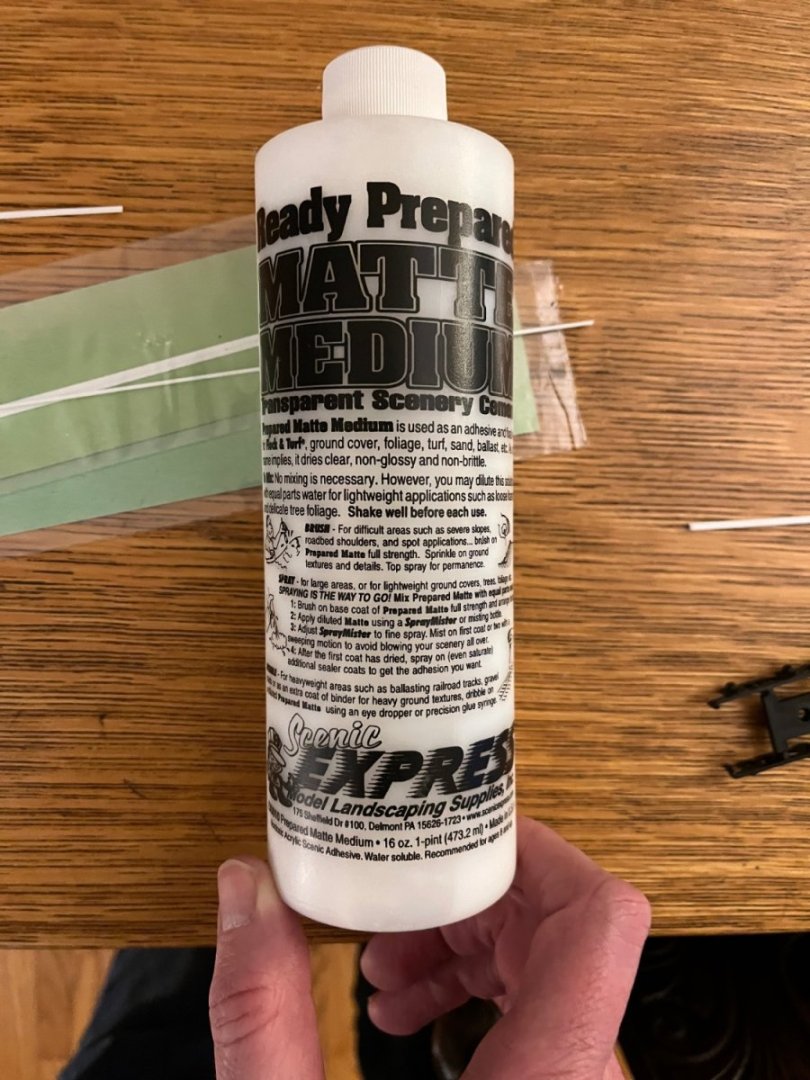-
Posts
3,262 -
Joined
-
Last visited
Content Type
Profiles
Forums
Gallery
Events
Everything posted by realworkingsailor
-
From what I’ve been able to dig up, the 3rd Anti Tank didn’t receive their Archers until much later in the War. Photos of them after D-day show them using American M-10s or Universal (Bren) Carriers towing 6 pounders. As for when they may have crossed paths, the most plausible would be Operation Totalize, Aug 7 - 10 1944. In that operation 2nd Can Infantry Div And British 51st H Infantry Div broke out over Verrieres ridge along the Caen-Falaise highway. And from the looks of it, Tamiya really botched the instructions as 2nd Anti Tank RCA was attached to 2nd Can Infantry Div, not 3rd. So far all that means that the Division identifier on the Archer should be a gold maple leaf on a blue background as opposed to a gold maple leaf on a grey background. Andy
-
Regarding the 2nd or 3rd Anti-tank, it’s possible that an earlier issue of the kit contained markings for the latter, they just neglected to update that part of the instructions. And just to note regarding your figures, the Canadian uniforms, while they followed the same pattern as the British ones, the material was more of a greenish colour. If you do a couple of google searches for Canadian or British battledress there are lots of colour photo examples. Anyway, can’t wait to see this build! Andy
-
Thanks Alan, it’s a useful technique any time you need to leave an impression in plaster without messing up that which you are using to impress. Footprints, tire tracks, or even the keel imprint from a boat on a muddy riverbank. I had hoped to be able to do further work on my diorama this weekend, I had ordered the scenery supplies for the first layers, however it appears that someone in the postal service put my parcel on the wrong truck: Feb. 2 11:09 am Item re-routed due to processing error; Possible delay 😡😡 So I shall now have to find something else to do this weekend…. I was so hoping to turn that white plaster field into various shades of fuzzy green ground foam… Andy
-
Thanks for the likes and kind comments! As predicted, adding the spackling compound took a good portion of the weekend. First step was to add another layer to the raised "runway" area: I did get a little bit of cracking, I suspect this was partly due to the underlying layer absorbing some of the moisture from the top layer, causing it to cure too quickly. Not a big deal as I just went over with a small amount to fill in any blemishes afterwards. I then put on a skim coat over the entire board. This was a very thin layer that will provide a nice base to which paint and scenery can adhere. Unfortunately, the only photo I have of this step turned out blurry and dark. Too much of a rush with the camera (the dog wanted to go walkies... right now!). Anyway, once that was dry I needed to take care of the "muddy" areas. I first applied a dollop of spackling compound into the recessed areas and smoothed it out with my putty knife. I wanted to create some wheel ruts and signs of travel. To do this I first covered the area with a layer of cling film (Saran Wrap). I then took a couple of "spare tires" from the Airfix kit that I hadn't yet glued to their respective vehicles (planning ahead here!), and stuck them on the end of a bamboo skewer with a bit of blue tack. Using the matching vehicle to gauge track width, I rolled the wheel through the wet blob of spackling compound. The cling film kept the compound from adhering to the wheels. By applying a bit of pressure as I rolled the wheels along, I could accurately reproduce the effects of a wheel, or a few wheels passing through mud: After leaving my impressions, I carefully lifted off the Saran Wrap to allow the spackling to dry. Resulting in a couple of rather stark looking mud holes! As things stand now, I have a nice white base ready for an undercoat of paint: I was able to get things fairly smooth with the putting knife as I applied the spackling, there were only a couple of spots where I needed to go over with a little bit of sand paper. I'm not fussed about having it completely flat. Even the most "level" ground has subtle undulations and bumps. Most of the ones noticeable on my board will disappear under the scenery anyway. Time to get an order in for some scenery supplies! Andy
-
@James H i am starting this post 7 minutes after you posted your reply. Still no notification (I manually opted to follow this topic when I first posted). Maybe it is the second issue you mentioned. (I’m only randomly guessing). Andy Edit: notification arrived at 13:01 EST, 13 minutes after your post, advising that you had replied “Just Now”
-
I’ve noticed over the last few days that my notifications are lagging. Alerts for responses to threads I follow don’t show up immediately after a new post has been added (as had been the norm). For example I am set to follow King Derelict’s Loarre Castle build and a post was made 26 minutes ago. As you can see here, no notification alert is indicated, yet (?). The last notification being issued an hour ago. Anyone else having this problem? Any thing I can do on my end to fix it? Andy Edit at 9:17 the notification arrived saying the post was added “6 minutes ago”, which still means a considerable time lag.
-
Thanks for the comments and likes, everyone! 😀 @yvesvidal Almost every dio I've seen online has either a B-17 or a Lanc (or a bunch of Spits), Wellington dios are about as rare as hen's teeth! Work has begun on the scenery base. I first plotted out where I wanted my terrain features to go with a sharpie on the foam board. I did this with the models in place to ensure the features would fit alongside them: Apologies for the soft focus on this first picture. In order to differentiate certain aspects, I decided to create a slightly raised "runway" area in the bottom left. Any pictures I've seen of Wellington bases all seemed to have grass runways, so by adding some subtle elevation it would help to differentiate this from the rest of the base. I also wanted to include the effects of less than ideal weather by having a good sized mud puddle. All these other dios seem to depict operations as they would have appeared on a sunny early summer morning. I want to show the effects of a recent run of wet weather. I will also mix in some areas of static grass to detect some less travelled areas, where the grass hasn't been compacted by the comings and goings of heavy airplanes and other vehicles. To add some depth to the terrain, I "excavated" the muddy areas with a rasp. A nice feature of working with foam is the ability to create below grade features. A good tip is to excavate these features a little deeper than you anticipate needing! My personal preference for a base material is DAP DryDex spackling compound. It comes ready to use and spreads reasonably well with a putty knife. It handles Woodland Scenics scenery paint just as well as any other type of plaster, and any other products typically used for scenery, and it is less messy to apply and has a decent working time and once dry, it sands well. I should mention too, it's about half the price of WS hydrocal plaster! The first area I applied the DryDex is the "raised" area. This will take a couple of thin layers as thick coats will be prone to cracking! As you can see the compound goes on pink, but it will turn white as it dries (you can see this transition just starting along the upper edge). The sub scenery should take me most of the weekend, a lot of time will be spent waiting for the DAP to dry. Not much of an update, seems like an awful lot of words to say "Hey look, I made a pink triangle!" 🤪 Andy
-
Nice! Glad you can find them! Yeah, the Canadians had a very rough go in Normandy. While the Americans and British garner the lion’s share of attention from most historians, the Canadians have been largely forgotten. And, yeah, the fighting was brutal. The Canadians suffered a higher casualty rate than either the British or the Americans (while the Americans did suffer a higher absolute number of casualties, in terms of casualties as a percentage of the attacking force, the Canadians had it much worse). The text in the books is well supported by fairly detailed maps. I have the paperback editions and I had to keep a separate bookmark for the maps section as I kept flipping back and forth to follow along with the narrative. Andy
-
Not sure if you’ve ever delved into a regimental war diary before, but they contain a lot of information. My great-uncle was in the 2nd Medium Regiment, RCA. I went through their war diary last fall (over 8000 pages of records). An incredible amount of raw data, but I found it very much lacking in context. To paraphrase a sample entry: “Morning, guns deployed at position XYZ, zero lines established. Early afternoon, fired X rounds HE at target ###. Late afternoon X battery shelled by enemy, one OR sustained minor injuries” All great information…but what exactly just happened?? In my case I’ve been reading a series of books about the Canadian actions in the Italian campaign (where my great-uncle was deployed), finally I’ve been able to establish the “why” and the “what”, the context that was sorely lacking. If you’re interested, and if you can get them, there’s a series of books by Mark Zuehlke that details the Canadian army campaign(s) in Europe. Three of them (Juno Beach, Holding Juno, Breakout From Juno), would cover the period you’re looking at. They’re quite detailed, but a reasonably easy to follow narrative (and, critically, no editorializing, save maybe a reflexive epilogue). Andy
-
From what I’ve been able to dig up, the 2nd Anti-Tank Regiment, Royal Canadian Artillery, was equipped with Archers from Normandy through to the end of the war. If you scroll down through here: https://www.silverhawkauthor.com/post/royal-canadian-artillery-rca-first-canadian-army-north-west-europe-1944-1945 there are a few photos of the 2nd in action with their Archers in the Rhineland in early ‘45. The regiment’s war diary is available online: https://recherche-collection-search.bac-lac.gc.ca/eng/home/record?app=fonandcol&IdNumber=926793 They had an interesting day outside of Caen in July 1944: https://www.wartimes.ca/forums/viewtopic.php?t=1401 Hope that helps! Andy
-
Really looking great! Your experience with the WS coarse turf is typical, not much you could have done differently, larger scale or otherwise. Not sure why they insist on selling it in shaker bottles, I guess it stores better on a shelf! You’re working at a scale where it best represents scrubby bushes, so placing down one small clump at a time is very effective. Model scenery is, at best, an illusion meant to fool the eye when viewed from a typical distance. Keep up the great work! Andy
-
What you may wish to consider, is before adding your top fixative, spray a mist of water mixed with isopropyl alcohol to wet the surface of the WS ground foam. This will help the glue (or acrylic medium) to wick into the foam. Otherwise you run the risk of having the ground foam forming a hard shell, top and bottom, with an unglued middle. Long term this will be prone to cracking. Wetting the ground foam also has the added benefits of keeping it in place when you drizzle on the top coat of glue, as well as helping the glue cover a greater surface area (meaning you’ll need less glue). Otherwise, it’s looking very good! Andy
-
One thing is for certain, when you have momentum, things can happen quickly! I stopped by my local hardware store this morning and picked up a piece of foam insulation board. It's not pink, or white, or green, but a neutral grey colour.... anyway, it's the good high density foam board perfect for my needs. It's a 2" thick board so it is more than rigid enough for my purposes. Of course, I couldn't wait to cut off a chunk of that 2' x 8' board and try out some ideas on how I want to see everything arranged. I started off with a piece 18" x 24", which worked out to be about the same size as my cutting mat. I am a big fan of empty space in a scene. I think a subject needs space to breathe in its surroundings, and the more things that are "happening" in a scene, the more space it should have. Rest assured the "empty" space won't be entirely empty, nor will the ground be a generic green carpet of "grass". I will endeavour to make the landscape look suitably trodden and driven over, maybe even a mud puddle or two (England is stereotypically known for being a damp country, accurate or not). To bring the viewers attention to the exposed engine, I figured this "maintenance" scene would be enough to draw people in. While on the other wing, refuelling is underway. Out in front a bomb train with the night's payload is getting into position while some other airfield traffic is passing by on the verge of the grass runway/taxiway. Realistically, if you follow the film I previously posted, the incendiary bombs would travel, and be loaded separately from the conventional bombs, but I've only enough parts for one bomb train. The figures will loose their bases when it comes time to place them about the finished scene, so they will shrink by about a scale foot. Time to make a shopping list for the scenery items! Andy
-
Oh yes, not to worry! 😁 Any of the pellet-y stuff (white or whatever colour) is only good for coffee cups. I’ve been around the pink board in a model railway situation and it seemed to work well enough (but yeah, it didn’t take impacts very well). A layer of hydrocal plaster on top can hide a lot of incidental divots. Andy
-
So I've been kicking around this diorama idea since I started working on my Vickers Wellington bomber. Although I haven't yet begun construction of the diorama, I've been busy messing around building the little detail bits that will add to my fictional scene. Airfix provides a couple of useful kits for this purpose. The largest being their WW2 RAF Bomber Resupply kit, which I picked up back in November last year. This kit includes a variety of appropriate vehicles and other paraphernalia that would have been right found on many airfields. I have been slowly picking away at building these elements over the last little while. I don't have any in-progress shots as I found this kit a bit of an annoying one to build. I can't quite put my finger on why I feel that way about this particular kit, but there it is. It's not like it was particularly challenging to build, it is somewhat repetitive (hand painting the tyres on 32 different wheels), maybe that's why it begin to feel like more of a grind.... but I am happy with the results. Over a year ago, I also bought a set of RAF figures, also from Airfix). I will be using these to populate my scene as well as a couple of the vehicles. They are marked as being 1/76 scale, but they don't seem to be out of proportion for the 1/72 vehicles. I had some fun before Christmas painting this gang of miscreants. Not sure how many I'm actually going to use, but I feel I have a nice selection to choose from. For whatever reason, they were moulded in a soft acetyl plastic. It was a bit of a pain to remove the flash, and although the paint seems to have adhered, it won't stand up to too much abuse. The first vehicle in the bomber resupply set is a Bedford MW: The kit comes with provisions to build the Bedford as either the MWD cargo version or the MWC water carrier (some people think it is a fuel truck, but it is not). I elected to build the cargo version, as the water truck was for refilling the radiators of liquid cooled engines (Merlins, or Napier-Sabers). Since my bomber has a nice set of air-cooled Bristol Pegasus radials, the water truck was pointless. The next vehicle in the kit is a 12Hp Austin Utility (Tilly): Another pretty straight forward vehicle. I performed some surgery on one of the Airfix figures, so I could show the Tilly being "driven". My Tilly doesn't exactly follow the Airfix prescribed paint scheme, but I think it still looks good. Following the Tilly is a tractor/tug: The kit tractor is a David Brown VIG1, but I made some non-prototypical modifications. I thought the front fenders on the VIG1 looked kinda hokey, so I cut them off to make my tractor look more tractor-ish with the open front wheels. The kit also supplies parts for a recovery winch and anchor spades, but I left those parts off as my tractor will only be hauling bomb trolleys. I suppose I could have hunted around for a 1/72 Fordson. But I'm going with my version. As the tractor was an open vehicle, a figure also had to be surgically modified to fit. He kind of looks like he's driving, although he's a bit casual looking, leaning back staring up at the sky. Speaking of bomb trolleys, the kit provides 3: There are two Type "C" trolleys. I built these as per the instructions. Nothing too fancy. The remaining kit supplied trolley is a Type "D". This trolley was designed to carry the HC 4000lb and 8000lb bombs, both of which are too big (and too late) for my Wellington (the later Wellington Mk III and Mk X could carry the 4000lb "Cookie", but that required changes to the internal framing of the bomb bay). In most photos I've seen of Wellingtons being re-armed in the earlier part of the war, the bombs were hauled on a Type "B" trolley. This consisted of a suspended centre beam with the bomb cradles sticking out like ribs. To be able to show a more complete load out for my Wellington, I decided to try my luck at scratch building one of these types of trolleys: I found a few useful photos on the internet to help get the basic structure. I did keep a couple of parts from the Type "D" trolley, the front and rear axles, the wheels and the draw bar, the rest was styrene strip and a little bit of brass wire. There is a fair selection of other bombs included in the set I have yet to add the decals to these yet. The grey boxes are Small Bomb Containers, these contained the incendiary (thermite) bombs used by the RAF. Getting back to the maintenance side of things, the last large "vehicle" is a 450 gallon Brockhouse bowser: For reasons I can't fathom, Airfix supplied decals for this as a lube oil bowser (boring). I would have much rather seen this as a fuel bowser instead. These were typically marked with "100 Octane" in large white letters on each side (rather than "OIL" stencilled on one end). As I wanted a fuel bowser, I left the "OIL" stencil off, but snagged the roundels from the Bedford water carrier that I didn't need. The final item build is this rather spindly maintenance tower: It will fit nicely beside the engine that I left open to view on my Wellington. For the rest, there is an assortment of other items like oil drums, fuel canisters, tool boxes, chocks, that will be added later when things get going. I will revisit this log when I finally get underway with building my diorama. I need to purchase some scenery materials as well as a base. I am planning to build on a slab of 2" thick insulation foam. This is common in the model railroad community, as it provides a lightweight, stable substrate. Andy
About us
Modelshipworld - Advancing Ship Modeling through Research
SSL Secured
Your security is important for us so this Website is SSL-Secured
NRG Mailing Address
Nautical Research Guild
237 South Lincoln Street
Westmont IL, 60559-1917
Model Ship World ® and the MSW logo are Registered Trademarks, and belong to the Nautical Research Guild (United States Patent and Trademark Office: No. 6,929,264 & No. 6,929,274, registered Dec. 20, 2022)
Helpful Links
About the NRG
If you enjoy building ship models that are historically accurate as well as beautiful, then The Nautical Research Guild (NRG) is just right for you.
The Guild is a non-profit educational organization whose mission is to “Advance Ship Modeling Through Research”. We provide support to our members in their efforts to raise the quality of their model ships.
The Nautical Research Guild has published our world-renowned quarterly magazine, The Nautical Research Journal, since 1955. The pages of the Journal are full of articles by accomplished ship modelers who show you how they create those exquisite details on their models, and by maritime historians who show you the correct details to build. The Journal is available in both print and digital editions. Go to the NRG web site (www.thenrg.org) to download a complimentary digital copy of the Journal. The NRG also publishes plan sets, books and compilations of back issues of the Journal and the former Ships in Scale and Model Ship Builder magazines.

